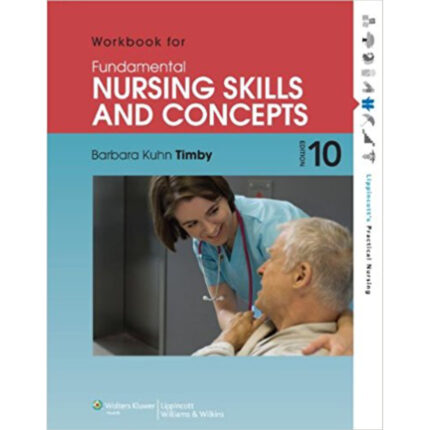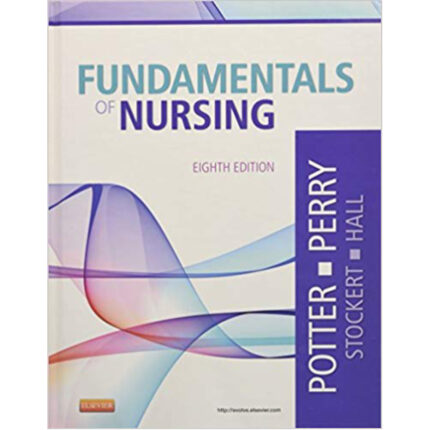Contemporary Nursing Issues Trends And Management 4th Edition By Jacob -Test Bank
Cherry: Contemporary Nursing, 4th Edition
Test Bank
Chapter 11: Complementary and Alternative Healing
MULTIPLE CHOICE
1.A patient observes the practitioner burning a dried herb on the needle during an acupuncture session and asks about this practice. The practitioner responds, “I am inciting the acupuncture points and this is referred to as
A. doshas.”
B. moxibustion.”
C. yoga.”
D. kapha.”
ANS: B
(B) is correct because applying heat to the acupoints is termed moxibustion. (A) is incorrect because distinct metabolic body types called doshas include vata, pitta, and kapha; signs of illness occur when the delicate balance of the doshas is disturbed. (C) is incorrect because yoga is a type of mind/body intervention of complementary alternative medicine. (D) is incorrect because kapha is the metabolic body type that is characterized by a relaxed, graceful tendency toward procrastination, affection, forgiveness, compassion, long and deep sleep, coolness, pale and oily skin, slow eating, a tendency toward high cholesterol, obesity, allergies, and sinusitis.
DIF: Comprehension REF: Page 238
2.An older adult has atrial fibrillation that causes the heart to have an irregular rhythm. The client uses imagery to alter the arrhythmia. The client is using which type of complementary alternative medicine (CAM)?
A. Ayurveda
B. Dosha
C. Homeopathy
D. Biofeedback
ANS: D
(D) is correct because biofeedback is a type of mind/body intervention that is based on techniques in which the client is taught to alter specific bodily functions such as heart rate, blood pressure, and muscle tension. The client uses various relaxation and imagery exercises to produce desired responses. (A) is incorrect because Ayurveda consists of a group of noninvasive approaches that are used to achieve balance; these include yoga, massage, diet, purification regimens, breathing exercises, meditation, and herbs. (B) is incorrect because dosha is a distinct body type in which illness occurs with any imbalance. (C) is incorrect because with homeopathy, the care provider provides small quantities of remedies that produce symptoms similar to those of the illness being treated.
DIF: Application REF: Page 244
3.A patient with kyphosis is visiting a practitioner of chiropractic medicine for the first time and asks, “How does this therapy work?” The practitioner replies, “I will use my hands and heat to correct the misalignment of your spine by placing pressure on the nerves that have produced pain. The misalignment of your spine is referred to as
A. subluxation.”
B. a sprain.”
C. a fracture.”
D. epicondylitis.”
ANS: A
(A) is correct because the chiropractor corrects misalignments of the spine, called subluxations, by putting pressure on the nerves that are causing pain. (B) is incorrect because a sprain refers to a tear in a ligament. (C) is incorrect because a fracture is the separation of a bone or body part into two or more parts. (D) is incorrect because epicondylitis is inflammation of the elbow joints leading to “tennis elbow.”
DIF: Comprehension REF: Page 241
4.A young adult on a limited income who is having back pain states, “I want to see a chiropractor, but I don’t have any money. However, I do have health insurance.” The most appropriate response that the nurse can provide is as follows:
A. “Most insurance companies will pay for chiropractic treatment.”
B. “Because chiropractors are not licensed in any state, all services must be paid for by the patient.”
C. “Chiropractic medicine is a new CAM therapy that has not yet been recognized by insurance companies.”
D. “Chiropractic medicine is more than 100 years old, but because it is preventive in nature, it is not covered by most insurance.”
ANS: A
(A) is correct because chiropractic medicine is performed by a licensed professional with reimbursement privileges and is an accepted complementary alternative therapy. (B) is incorrect because chiropractors are licensed in the state in which they practice. (C) is incorrect because chiropractic medicine has been practiced for longer than 100 years. (D) is incorrect because chiropractic medicine is covered by most insurance companies.
DIF: Comprehension REF: Page 239
5.The use of plants in conventional modern medicine is evidenced by the drug atropine, which is derived from which plant?
A. Digitalis purpurea
B. Cephaelis ipecacuanha
C. Rauwolfia serpentina
D. Atropa belladonna
ANS: D
(D) is correct because atropine is derived from the Atropa belladonna plant, which primarily affects the parasympathetic nervous system. (A) is incorrect because the drug digitalis (Lanoxin) is derived from the Digitalis purpurea plant; it increases contractility of the heart, making it a popular choice for patients in heart failure. (B) is incorrect because the drug ipecac is derived from the plant Cephaelis ipecacuanha, which is used to induce vomiting in some cases of poisoning. (C) is incorrect because the drug reserpine is derived from the plant known as Rauwolfia serpentina and was used in the past to treat patients with depression; currently, it is used in the treatment of those with hypertension.
DIF: Knowledge REF: Page 241
6.The massage therapist uses kinesthesia, or thinking about how movement is expressed, to correct habits that cause poor posture and limited movement. This type of massage is called
A. Alexander technique.
B. Feldenkrais method.
C. healing touch.
D. reiki.
ANS: A
(A) is correct because the Alexander technique teaches improved balance, posture, and coordination through gentle hands-on guidance and verbal instruction. (B) is incorrect because the Feldenkrais method teaches movement reeducation through gentle manipulations intended to heighten awareness of the body; it is based on the belief that each person has an individualized optimal style of movement. (C) is incorrect because healing touch is a multilevel energy healing program that incorporates aspects of therapeutic touch with other healing measures. (D) is incorrect because reiki uses the hands or gestures to channel ki energy from an intangible spirit to bring about healing.
DIF: Application REF: Page 245
7.A nurse practices a relaxing massage technique to stimulate and apply pressure to the feet or hands that increases blood supply, thus improving circulation to various parts of the body and relieving pain. The massage technique used by the practitioner is referred to as
A. reflexology.
B. Feldenkrais method.
C. Reiki.
D. Rolfing.
ANS: A
(A) is correct because reflexology produces pain relief through pressure applied to pressure points on the hands and feet that correspond to various parts of the body. (B) is incorrect because the Feldenkrais method is a type of chiropractic medicine in which massage is used to teach movement reeducation through gentle manipulations intended to heighten awareness of the body; it is based on the belief that each person has an individualized optimal style of movement. (C) is incorrect because Reiki uses energy therapy to direct universal life energy to specific sites. (D) is incorrect because Rolfing is the use of manual manipulation and stretching of fascial tissues of the body to establish balance and symmetry that cannot be attained by deep massage.
DIF: Application REF: Page 245
8.A patient is placed on reserpine (Serpalan) to decrease mild anxiety and treat hypertension. The patient researches the medication on the Internet and finds that this medication comes from which plant?
A. Atropa belladonna
B. Digitalis purpurea
C. Rauwolfia serpentina
D. Ipecac
ANS: C
(C) is correct because the drug reserpine is derived from the plant known as Rauwolfia serpentina; it was used to treat depression in the past but currently is used in the treatment of hypertension. (A) is incorrect because atropine is derived from the Atropa belladonna plant, which primarily affects the parasympathetic nervous system. (B) is incorrect because the drug digitalis (Lanoxin) is derived from the Digitalis purpurea plant; it increases contractility of the heart, making it a popular choice for patients in heart failure. (D) is incorrect because the drug ipecac is derived from the plant Cephaelis ipecacuanha, which is used to induce vomiting in some cases of poisoning.
DIF: Comprehension REF: Page 241
9.A person who is recovering from a stroke is becoming more forgetful and is unable to recall people’s names. A friend suggests the use of a natural ingredient, Ginkgo biloba. Which risk associated with this herb is the most serious?
A. Thromboembolism due to increased clotting
B. Seizures due to interaction with anticonvulsants
C. Hypertension due to sodium retention
D. Photosensitivity due to increased melanin production
ANS: B
(B) is correct because this herb reduces the efficacy of anticonvulsants, which may lead to increased seizure activity. (A) is incorrect because this herb decreases coagulation of blood by prolonging bleed time. (C) is incorrect because Ginkgo biloba has no known effect on sodium regulation. (D) is incorrect because photosensitivity is due to decreased melanin production, which offers protection.
DIF: Analysis REF: Page 242
10.An elderly woman stops using complementary alternative medicine (CAM), becomes disoriented, and is given a diagnosis of dementia. The family is upset with the family physician and the CAM practitioner for not diagnosing the condition earlier. Which of the following CAMs may have interfered with early detection of the dementia?
A. Large doses of calcium caused cerebral plaques to form, thereby disguising atrophy of the brain.
B. Excess doses of folic acid masked a vitamin B12 deficiency that led to dementia.
C. Hypnotherapy focused on current pleasant thoughts, eliminating clues to the past.
D. The electrical current from magnetic fields interfered with normal brain waves, resulting in confusion and inability to concentrate.
ANS: B
(B) is correct because individuals with Alzheimer’s often have low levels of vitamin B12; thus, large doses of folic acid may have masked the dementia. (A) is incorrect because calcium results in kidney stones and malabsorption of other essential minerals but would not disguise atrophy of the brain. (C) is incorrect because dementia is not associated with unpleasant thoughts of the past; instead, life review and reminiscence may stimulate cognitive function and a sense of well-being. (D) is incorrect because magnet therapy is thought to relieve pain by creating a slight electrical current that stimulates the nervous system; it is also thought to speed wound healing by dilating vessels and increasing circulation to an area and is even purported to boost the immune system.
DIF: Application REF: Page 241













Reviews
There are no reviews yet.